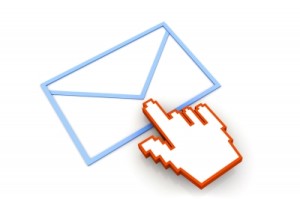 Steve Sipress
Head Rhino & Chief Strategist
Steve Sipress
Head Rhino & Chief Strategist
Jason Leister: How to Sell Products Online Without A Sales Letter

Image courtesy of cooldesign/FreeDigitalPhotos.net
Two and a half years ago, I chanced upon something in my business that is transforming my life…
What did I discover?
I simply sat down and started writing emails on a daily basis to service providers about working with clients. I had just come off of a bit of a client “train wreck” and I had some issues to work through.
The truth is, I had made some serious mistakes in managing the client relationship. It was pretty much my fault for being naive, shortsighted and scared. I thought that, rather than stay angry for the rest of my life, I’d try to turn my experiences into a positive.
So I decided to start sharing what I learned about working with clients with others who were in very similar situations. I simply sit down each morning and write an email focused on helping solve the problems of my readers.
In my work as a direct response copywriter, I spend most of my time doing things that some people might consider impossible. In the space of a relatively short sales letter, a copywriter has to get the attention of a reader, build some trust, present a product or service and show how that can add value to the reader’s life. Then (as if that isn’t hard enough), the copywriter has to present a specific offer for the reader and prompt action on that offer sooner than later.
When everything works, it is truly a beautiful thing.
The Valuable Conversation That Never Ends
The challenge when you’re writing a sales letter is that you have a lot to accomplish in a very short period of time. That amount of time isn’t how long your reader takes to read your letter — I wish you got that long. You only have as long as your reader decides to give you. Once your reader withdraws her attention, your chances of making a sale go to zero. You lose.
That’s why copywriters go to the trouble to write good sales letters. What makes a good sales letter? Good sales letters are inherently valuable. That means that your reader goes away from your marketing better than before they read it. Your sales materials actually add value to your readers’ lives regardless of whether or not any sale happens. Making sure this is true of your sales efforts certainly increases your chances of keeping someone’s attention. But it’s still a challenge.
If you were selling face to face, things would be much easier, of course. Your prospect probably wouldn’t want to offend you by just leaving the room while you were talking. But that’s exactly what happens when you’re trying to sell in print. Your prospect can leave at any time. Ouch!
So imagine if you could start a sales conversation that never ended? One that didn’t make an all or nothing sales proposition (which could easily be ignored)? One that didn’t push anyone away but instead slowly drew them in? This is what I discovered happens when you send a piece of value (email) every day into the life of your prospect.
Now there are plenty of people doing just this on a daily basis. Some for well over a decade now. So this approach is certainly nothing I invented. However, the number of organizations or individuals that make a commitment like this is small. Very small in the big picture.
That means you stick out if you do it. But that’s not the most valuable benefit, not by far.
The Benefit Of Slow Motion Demonstration
One of the most effective selling techniques is demonstration. There are countless examples of this throughout history. If you are selling, demonstrating what you have, showing what it does and how it benefits the buyer is an effective way to go about it.
People today are trained to ignore advertising. So if what you’re sending them looks, feels and tastes like advertising, you are putting yourself at a disadvantage.
When you are “showing up” in someone’s life every single day, you are demonstrating in tiny bite sized pieces. Over time, that demonstration adds up. Pretty soon, you’ve built a level of trust that is virtually impossible to create with a single sales letter.
In fact, there comes a time when the trust is so strong, you don’t even need a sales letter to sell your products or services. Sure you can use one if you want, but you can sell without it. Because the “sale” is actually something that you earned long ago — you’re just getting paid for it now.
As the selling landscape online gets louder and louder, it’s getting more and more difficult to secure the biggest asset you need before you can even begin to sell—that asset is attention.That is why adding value to your future customers’ lives first is so effective. It’s about them, not you.
The “there’s no free lunch” business experts would probably cringe at an approach like this. But the fact is: reading an email from me everyday isn’t free for my reader. It is true they didn’t pay in money. They pay with something far more valuable. The price they pay is denominated in time and attention.
As it turns out, those two things are far more valuable than just about anything else.

Recent Comments